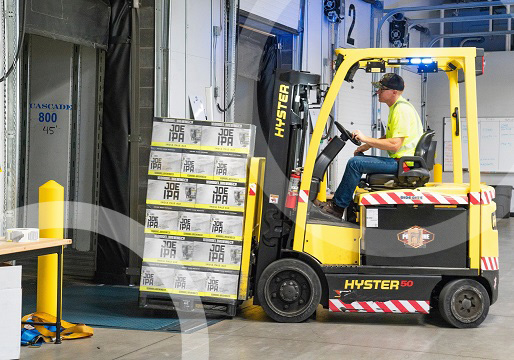For business-to-business (B2B) ecommerce companies, maintaining visibility on your website for inventory across multiple locations is a constant challenge.
Across the logistics sector continuing labor shortages are adding to operational pressures. In the US more than seven out of 10 operators are struggling to find staff.
Accurate information and efficiency are becoming top priorities to help maintain staff wellbeing, meet demand, manage costs and do more with less.
Cloudfy Warehouse management system for B2B businesses
If you have been looking for a way to easily pull inventory into your B2B ecommerce portal from multiple warehouse locations that are tagged in your ERP software, Cloudfy is your solution.
Cloudfy’s out-of-the-box multi-warehousing feature integrates with your ERP system to provide the essential tools you need to efficiently manage multiple physical, virtual, and mobile warehousing locations and storefronts.
Even the addition of autonomous maneuverable robots (AMRs) can’t solve the problems associated with customer expectations for fast turnarounds, increased stock-keeping units (SKUs) and more product returns.
For B2B businesses dogged by inaccurate data, unpredictable levels of demand, poor visibility of stock levels and too much manual processing a warehouse management system (WMS) could solve all these problems.
As your business grows, you’re probably also looking to upgrade your B2B ecommerce platform to improve your sales and ordering processes as well.
Unfortunately, there are very few ecommerce solutions that work well with a WMS to allow systems and processes to be integrated so critical data can be shared. However, since Cloudfy was purposefully designed from the outset to meet the needs of B2B businesses and direct to consumer (D2C) operations it comes with out-of-the-box WMS integration. You don’t need to pay for and set up a separate connector and, because it’s a software as a service (SaaS) solution, this can all be hosted and maintained in the cloud.
When your B2B website and WMS are fully integrated you benefit from:
• consolidated reporting
• improved accuracy and error reduction
• a single connector to save you time, money and effort
• reduced IT responsibilities.
Overcoming your warehouse management system challenges
Product movements –
Staying up to date with stock movements when you’re selling online, on the phone, and in store can be one of your biggest challenges. However, when you hold a single master inventory list that includes sales you can track stock more easily. Integrating your product ledger with your enterprise resource planning (ERP) system gives you a single location for documents such as goods in, goods out, stock adjustments, shipments, warehouse transfers and sale orders.
Multi-warehousing –
Managing and controlling inventory across more than one location through pre-built ERP and WMS integration allows you to efficiently manage multiple physical, virtual, and mobile warehousing locations and storefronts. Wherever your inventory is held, items can be pulled and shipped based on business rules set by you.
Product Information Management –
Native product information management (PIM) features and the flexibility to integrate with other third-party PIM software means you can manage your product information, deliver personalized experiences, scale your SKU capacity and manage your inventory as your business grows.
Inventory visibility –
Showing your customers accurate information about your stock levels online will give them the confidence to place their orders. If you wish, you can give them different views before and after they log in. You can provide product counts and lead times, enable back-ordering, and automatically trigger back-in-stock notifications. You can set up thresholds to avoid out-of-stock situations and give your key clients a pre-ordering option.
Mobile warehousing –
If you use mobile warehousing to dispatch orders when your field sales representatives are out and about, for example, you can still stay up to date with the stock you hold with barcode readers and near real-time updates to your ERP.
Virtual Inventory –
Virtual warehousing allows you to define an area for a customer’s products, even when you don’t have a physical location. Your customers can then draw down inventory from their allocated virtual location. This works well for seasonal B2B businesses and, as with physical warehouse locations, your virtual warehouses can be integrated with your ERP so that inventory and customer data is synchronized.
Pick-up locations –
If some of your customers visit your locations to pick up their orders, you can assign them to your nearest premises and show that address in the cart and during their checkout. You can also set back-up locations for them to use if the primary location is out of stock or give customers the option to choose the location they prefer to use.
Stock checks –
Nobody enjoys stock checking but the ability to filter your inventory by attributes such as cost or warehouse location makes it easy to download a list of the inventory you want to count. You can then complete a physical inventory of the items you actually hold in stock and upload the updated list back to your ERP.
Book a free Cloudfy demonstration to see how it works.
Choose a Cloudfy B2B ecommerce platform
Solve your warehouse management system challenges with a trusted partner
Cloudfy comes with out-of-the-box ERP and WMS integration to give B2B businesses full control of inventory, SKUs, packaging requirements, containers and pallets. There’s no need for a separate third party connector.
As part of your B2B platform comparison we recommend you include a free Cloudfy demonstration.






